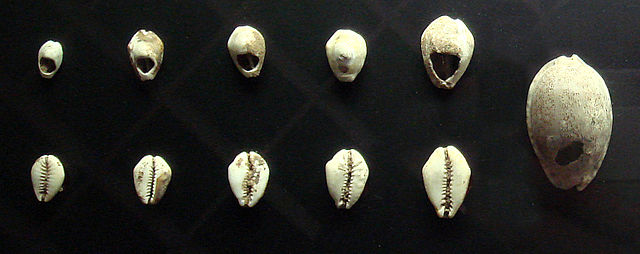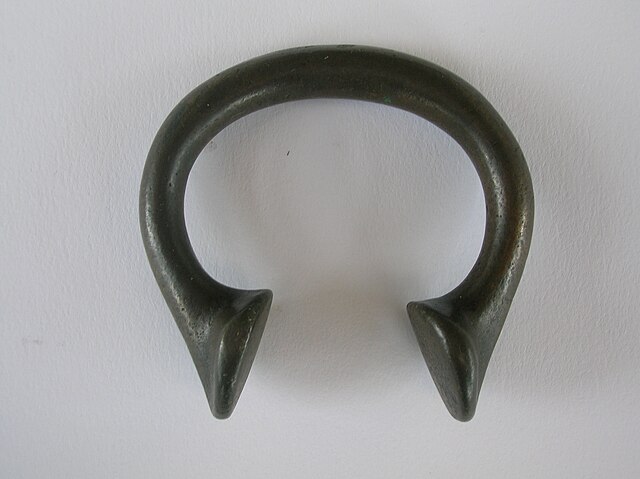Japanese currency has a history covering the period from the 8th century AD to the present. After the traditional usage of rice as a currency medium, Japan adopted currency systems and designs from China before developing a separate system of its own.
Kaei period Edasen ("Branch money"), the first result out of the foundry. The coins are then cut out and filed.
The ideogram for shell (貝) was incorporated into the ancient character for "coin"/ "treasure" (寶) Hō in Japanese (right).
Chinese shell money, 16-8th century BC.
Fuhonsen (富本銭), found in Asukaike (飛鳥池), from the end of 7th century, are made from copper and antimony. They are examples of early Japanese minting and they are currently housed in the Japan Currency Museum.
Commodity money is money whose value comes from a commodity of which it is made. Commodity money consists of objects having value or use in themselves as well as their value in buying goods.
This is in contrast to representative money, which has no intrinsic value but represents something of value such as gold or silver, in which it can be exchanged, and fiat money, which derives its value from having been established as money by government regulation.
Japanese commodity money before the 8th century AD: arrowheads, rice grains and gold powder. This is the earliest form of Japanese currency.
A bronze okpoho or manilla, the traditional commodity money in West Africa until the 1940s.
Axe-like grzywnas (commodity money) from Kostkowice, Poland, 9th to mid-10th century AD







